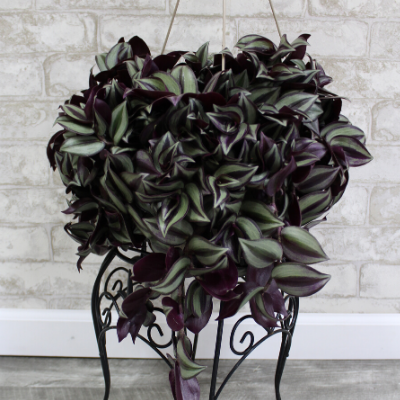Call Us Now! 800-335-4769
House Plants for Healthy Living: May

House plants are still going strong as a top trend for 2020. They have been proven to improve our mental health as well as boost our immune systems. Our May choices for House Plants for Healthy Living are below:
BOSTON FERNS
Boston Ferns gain popularity when the weather turns warmer; they’re great outdoor decor hanging from a shepherd’s hook, overhang, or plant table. They prefer high humidity and warmer temperatures but do great as indoor plants the rest of the year. These plants are a bit fussy when it comes to care. They do require regular monitoring to make sure they are maintaining proper moisture and light.
Light: Boston Ferns prefer bright, indirect light. They cannot tolerate full sun or full shade, so be sure they are in a proper location if outdoors.
Water: Ferns need moist soil at all times. Water regularly, and water when the soil is still damp. The frequency will change depending on the temperature and humidity.
Fertilizer: Fertilize your Boston Fern with a balanced water-soluble fertilizer once a month in the Spring and Summer.
WANDERING JEW
Wandering Jews are beautiful houseplants that are great as hanging baskets or trailing plants. Their deep purple and green leaves have a natural iridescent shimmer.
Light: Keep this plant in bright indirect light. If they don’t get enough light the leaf markings will fade.
Water: They like moist soil. Check the soil often, especially during the winter, to make sure it doesn’t get too dry. When watering, lift the foliage to water the soil directly. If the foliage gets too wet the plant can develop rot on top. However, they do like a light leaf misting to help them stay moist.
Fertilize: Use a half-strength liquid fertilizer to feed your Wandering Jew twice a month during the Spring and Summer, and every other month during the Fall and Winter.
Tip: Trim trailing pieces a quarter of the way down the vine to encourage growth and keep the plant full.
KIMBERLY QUEEN FERN
More upright than a Boston Fern, Kimberly Queen Ferns are easy-to-grow and great for adding a touch of the tropics to any indoor or outdoor space. Using these plants in your yard and patio through the warmer months is a great way to add texture and greenery. For an added bonus, they are deer resistant.
Light: Although these plants do great outdoors, they still need to be protected from direct sunlight. Keeping them in a partly shaded spot outdoors and in medium lighting conditions indoors is best.
Water: Ferns love moist soil. Monitor your plant regularly to ensure the soil is staying moist.
Fertilizers: These plants don’t require much food. At most, fertilize twice a year with a general-purpose fertilizer. If you are looking for more growth you can fertilize every quarter.
Fact: In Michigan you can treat these plants as annuals, or keep them all year and move them indoors during the winter and outdoors during the summer.
TRADEWINDS HIBISCUS
With blooms in yellow, pink and orange, these plants will add a tropical flair to your Patio. They thrive in the warm temperatures of summer, and love sunshine. It is best to grow Hibiscus in containers; they’ll be easier to bring inside for the winter.
Light: These plants love bright light. Keep them in a sunny location outdoors, and try to provide as much natural light as possible when indoors.
Water: Because Hibiscus are tropical, they love water. It is best to water daily during the summer months. You can back off on watering during the winter to a few times a week.
Fertilizer: For beautiful blooms, fertilize once a week with a liquid fertilizer high in potassium, such as English Gardens Bloom Booster.
May is a great time to start transitioning your plants to outdoor living. It is a great way to give them a “vacation” and boost their growing power with the natural sunshine and rain for a few months. Once temperatures stay above 55 degrees and the threat of frost is gone, gradually acclimate your plants to their new outdoor spaces over a few weeks. Start by placing them outside in a shady spot and slowly move them into more and more sunlight. If you move your plants too quickly they will get sunburned and their leaves will turn yellow.
When outdoors, most plants prefer a location with filtered sunlight, rather than direct sun, particularly at first.
Watch: Top 9 House Plants for your Home’s Lighting or House Plant Watering Tips for more information
For more plant care information or plant issues visit any English Gardens location and ask an expert.












